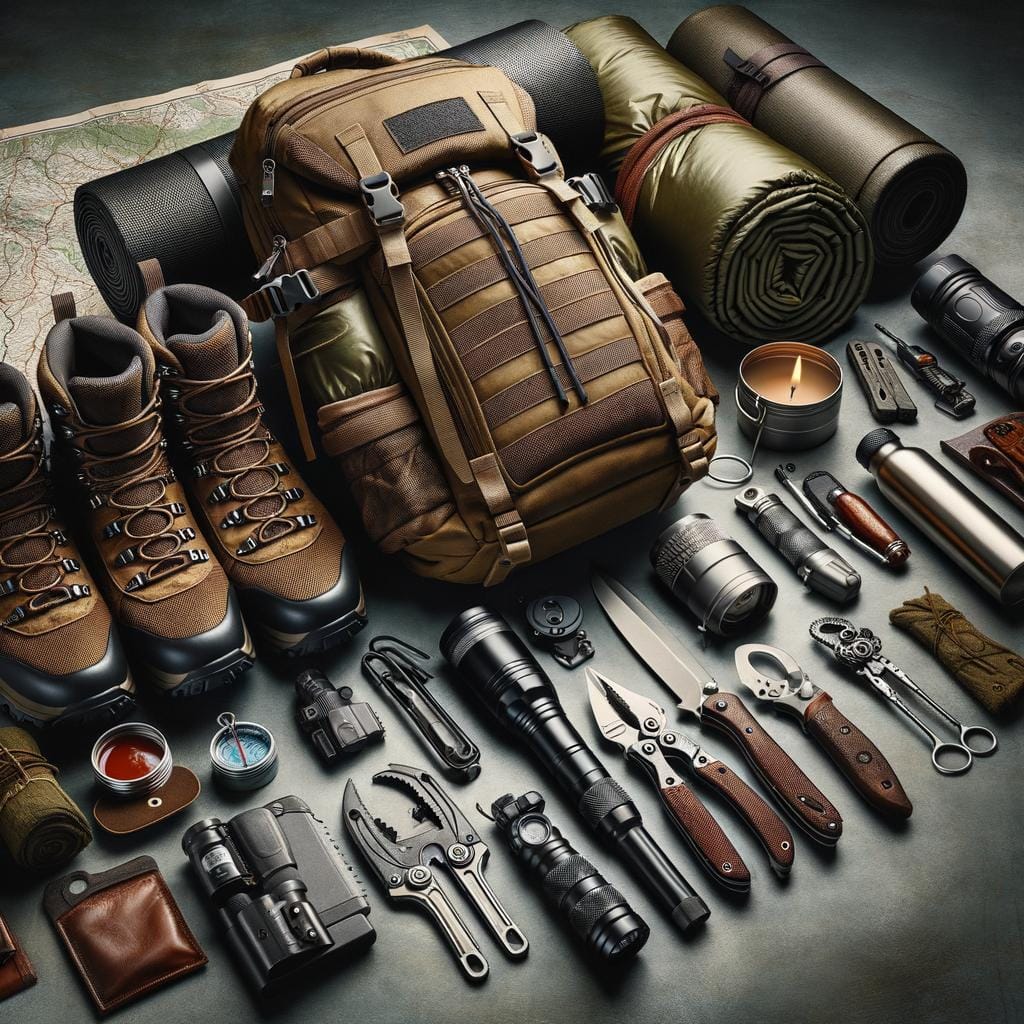In times of crisis, having a secure and reliable shelter can mean the difference between life and death. Survival shelters are essential for providing protection and safety during emergencies such as natural disasters, extreme weather conditions, or other unforeseen events. These shelters serve as a haven where individuals can find refuge, rest, and resources to sustain themselves until help arrives.
When it comes to survival shelters, there are various types to consider depending on the situation at hand. From underground bunkers designed for long-term stays to wilderness shelters for outdoor enthusiasts, to urban hideouts for city dwellers, the options are plentiful. Each type of shelter has its own unique features and benefits, catering to different needs and preferences.
Equipping your survival shelter with essential supplies is crucial for ensuring your well-being during challenging times. From food and water rations to first aid kits and self-defense tools, being prepared with the necessary items can make a significant difference in your ability to survive.
In this article, we will delve into the different aspects of survival shelters, including how to build one from scratch using natural materials or pre-built kits, selecting the ideal location for your shelter, maintenance tips, and real-life survival stories that highlight the importance of being prepared.
Types of Survival Shelters
When it comes to preparing for emergencies or disasters, having a solid shelter can make all the difference in ensuring your survival. There are various types of survival shelters that cater to different scenarios and environments. Whether you are facing a natural disaster, a wilderness expedition gone wrong, or urban unrest, having the right shelter can provide you with security and peace of mind.
Here are some types of survival shelters that you may consider depending on your specific needs:
- Underground Bunkers: These shelters are typically built below ground level and offer protection from severe weather, nuclear fallout, or other dangers. They can be fortified with supplies and equipment for long-term survival.
- Wilderness Shelters: When venturing into the great outdoors, having a wilderness shelter is essential for protection from the elements. These shelters can range from simple lean-tos made from branches to more elaborate structures like A-frame tents or yurts.
- Urban Hideouts: In situations where staying within a city or populated area is necessary, urban hideouts can provide camouflage and security. These could be abandoned buildings, hidden rooms within homes, or makeshift barricades for protection.
Each type of survival shelter has its own advantages and drawbacks, so it’s crucial to assess your surroundings and potential risks before making a decision. Whether you choose an underground bunker for long-term isolation or a wilderness shelter for short-term protection, having a safe haven to retreat to in times of need is essential for your survival.
Remember to stock your survival shelter with the necessary supplies mentioned in the previous section to ensure you have everything you need to sustain yourself during an emergency. By being prepared with the right type of shelter and adequate provisions, you can increase your chances of surviving even the most challenging situations.
Essential Supplies for Survival Shelters
Food and Water
One of the most important aspects of preparing a survival shelter is ensuring you have an adequate supply of food and water. Non-perishable food items such as canned goods, dried fruits, nuts, and energy bars are great options to stock up on.
It’s also crucial to have a reliable source of clean water either through bottled water or water purification tablets. In emergency situations, access to fresh drinking water can be limited, so it’s essential to plan ahead.
First Aid Kit
A well-stocked first aid kit is a must-have in any survival shelter. Basic supplies such as bandages, antiseptic wipes, pain relievers, antibiotics, and medical tape should be included. Additionally, it’s important to have any necessary prescription medications for individuals with specific health conditions. In high-stress situations where medical assistance may not be readily available, having the tools to treat minor injuries or illnesses can make a significant difference in survival outcomes.
Self-Defense Supplies
In times of crisis or emergency situations, personal safety can be at risk. Having self-defense supplies in your survival shelter can help protect yourself and your loved ones from potential threats. Items such as pepper spray, whistles, flashlights, and even self-defense training tools like tasers or batons can provide added security. While the hope is never to use these items, being prepared for any scenario is essential when it comes to survival shelters and overall safety planning.
Building Your Own Survival Shelter
Types of Survival Shelters
Before diving into the process of building your own survival shelter, it’s crucial to understand the various types available. From underground bunkers to wilderness shelters and urban hideouts, each option comes with its unique set of advantages and considerations. Depending on your location, budget, and specific needs, you can choose the most suitable type of shelter for your situation.
Gathering Necessary Supplies
When constructing a survival shelter, having the right supplies is essential for ensuring your safety and comfort. Some of the crucial items to have in your shelter include food rations, water purification tablets, first aid kits, blankets, flashlights, and self-defense tools. By being well-prepared with a stocked shelter, you increase your chances of survival in emergency situations.
Construction Process
Once you have selected the type of shelter and gathered all necessary supplies, it’s time to start building. Whether you opt for utilizing natural materials found in the wilderness or pre-built kits for convenience, following a step-by-step construction guide is key.
From creating a sturdy frame to insulating the walls and securing entry points, each stage of building your survival shelter requires precision and attention to detail. By carefully following the construction process outlined in this guide, you can ensure that your shelter is robust enough to withstand any crisis scenario.
Location Matters
When it comes to survival shelters, one of the most crucial factors to consider is the location. Choosing the right spot for your shelter can significantly impact your safety and protection from the elements. Whether you are building an underground bunker, a wilderness shelter, or an urban hideout, where you place it can make all the difference in a crisis situation.
One important consideration when selecting a location for your survival shelter is accessibility. You want to choose a spot that is easily reachable in case of an emergency but also well-hidden to avoid detection by others who may pose a threat. Being able to quickly access your shelter when needed can be a matter of life or death, so plan accordingly.
In addition to accessibility, another key aspect to keep in mind is the natural surroundings of the location. Look for areas with adequate natural resources such as water sources, food supplies like edible plants or wildlife, and materials for construction. Being close to these resources can increase your chances of long-term survival in your shelter. Remember, proper planning and consideration of these factors are essential when choosing the right location for your survival shelters.
| Location Considerations | Factors to Keep in Mind |
|---|---|
| Accessibility | Easily reachable but well-hidden |
| Natural Resources | Water sources, food supplies, materials for construction |
Maintenance and Upkeep
Survival shelters are essential for providing safety and protection in emergency situations, making it crucial to maintain and upkeep them over time. Regular maintenance ensures that the shelter remains in top condition and ready for immediate use when needed. In addition to preserving the structural integrity of the shelter, proper upkeep also allows for necessary improvements to be made that enhance its functionality.
One key aspect of maintaining a survival shelter is regular inspection to identify any wear and tear, structural damage, or potential weaknesses that need addressing. This includes examining the overall structure, roof, walls, entrance points, ventilation systems, and any other components of the shelter. By identifying and fixing issues early on, you can prevent further damage or deterioration that may compromise the shelter’s effectiveness during an emergency.
Aside from addressing immediate repairs or issues, ongoing upkeep of a survival shelter involves keeping it clean, organized, and well-stocked with essential supplies. Proper organization ensures easy access to necessary items such as food rations, water purification supplies, first aid kits, tools, lighting sources, and self-defense equipment. Regularly checking expiration dates on supplies and rotating stock help ensure that everything is up-to-date and in working condition when needed most.
| Key Maintenance Tasks | Benefits |
|---|---|
| Regular inspection for damages | Prevents structural weaknesses |
| Keeping shelter clean and organized | Easy access to essential supplies |
| Checking expiration dates on supplies | Ensures readiness of resources |
Survival Stories
Survival shelters play a crucial role in providing individuals with safety and security during challenging situations. Real-life accounts of people who have successfully used survival shelters underscore the importance of being prepared for emergencies. These stories serve as valuable examples of how having a shelter can make a significant difference in survival outcomes.
One survival story that stands out is that of a hiker who got lost in the wilderness during a snowstorm. Without proper gear or supplies, the hiker was facing extreme cold temperatures and limited visibility. Fortunately, the hiker remembered to pack a lightweight emergency shelter in their backpack. This simple but effective survival shelter provided much-needed protection from the harsh elements, allowing the hiker to wait out the storm safely until help arrived.
Another compelling survival story involves a family stranded in their car during a severe storm. With no other options for shelter, they relied on their vehicle as a makeshift survival shelter. By using blankets and extra clothing to stay warm and rationing their food and water supplies, the family managed to endure several days until rescue teams located them. This story highlights the versatility of survival shelters and emphasizes the importance of improvising with available resources in crisis situations.
These real-life accounts demonstrate that having access to a survival shelter can mean the difference between life and death in emergency scenarios. Whether it’s an underground bunker, wilderness shelter, or urban hideout, being prepared with essential supplies and knowing how to utilize your shelter effectively are key components of survival planning. By learning from these stories, individuals can better understand the value of having a reliable shelter strategy in place for any unexpected events.
- Always carry a lightweight emergency shelter in your backpack when venturing into remote areas
- Utilize your vehicle as a temporary shelter if you are stranded during extreme weather conditions
- Regularly review and update your inventory of essential supplies in your designated survival shelter
Conclusion
In conclusion, the importance of being prepared for any crisis situation cannot be overstated. By having a reliable survival shelter, individuals can greatly increase their chances of surviving and staying safe during emergencies. Whether it’s a natural disaster, civil unrest, or any other unexpected event, having a designated shelter can provide a sense of security and peace of mind.
Survival shelters come in various forms, from underground bunkers to makeshift wilderness shelters. Regardless of the type, ensuring that your shelter is well-equipped with essential supplies for food, water, first aid, and self-defense is crucial for long-term survival. By following the tips outlined in this article and taking the time to maintain and upkeep your shelter regularly, you can ensure that it remains a safe haven in times of need.
Real-life survival stories serve as a testament to the effectiveness of having a reliable shelter prepared in advance. These accounts highlight the critical role that shelters play in ensuring survival during crises. Ultimately, investing time and resources into building and maintaining a survival shelter can make all the difference when faced with adversity. Remember: being prepared is key to increasing your chances of survival in any crisis situation.
Frequently Asked Questions
What Shelter Is Best for Survival?
The best shelter for survival depends on the specific situation and environment. A sturdy tent can provide protection from the elements in various conditions. However, natural shelters like caves or debris huts can also be effective if properly constructed.
What Is the Best Shelter for Cold Weather Survival?
In cold weather survival situations, an insulated shelter is crucial to retain body heat and stay warm. A snow cave or an igloo can provide excellent protection from the cold as they act as natural insulators. Building a shelter close to a heat source like a fire can also help maintain warmth.
What Is the Easiest Shelter to Build in the Woods?
When in the woods, one of the easiest shelters to build is a lean-to shelter. This simple structure involves propping up a large branch at an angle against a tree or support, then covering it with smaller branches, leaves, or other debris for insulation. It provides basic protection from rain and wind with minimal effort involved.

An avid outdoor enthusiast, writer, and environmental advocate who has spent over two decades exploring the world’s most breathtaking landscapes. With a background in environmental science and a passion for adventure, Frances combines her love for nature with her talent for storytelling to inspire others to embark on their own outdoor journeys.





